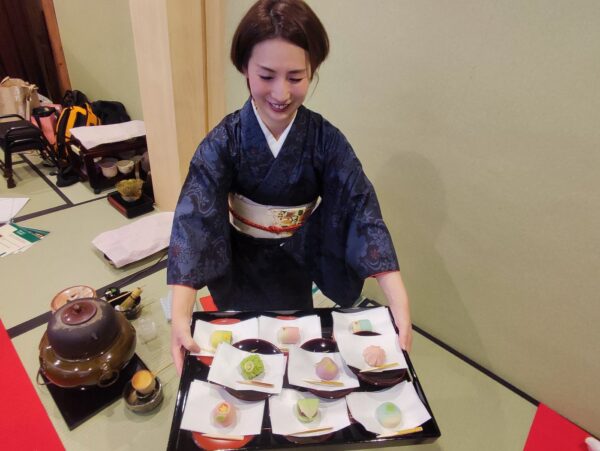
Tea ceremonies have a deep history in Japan. They symbolize harmony, respect, and purity. In Osaka, the bustling Doutonbori district offers a serene escape into this age-old tradition. The tea ceremony isn’t just about drinking tea. It’s a ritual where every movement and gesture reflects centuries of culture.
Whether you’re a traveler seeking authentic experiences or a local looking to reconnect with tradition, a tea ceremony in Osaka Doutonbori will leave a lasting impression. Let’s explore what makes this experience special and how to make the most of it.
Discovering the Charm of Doutonbori
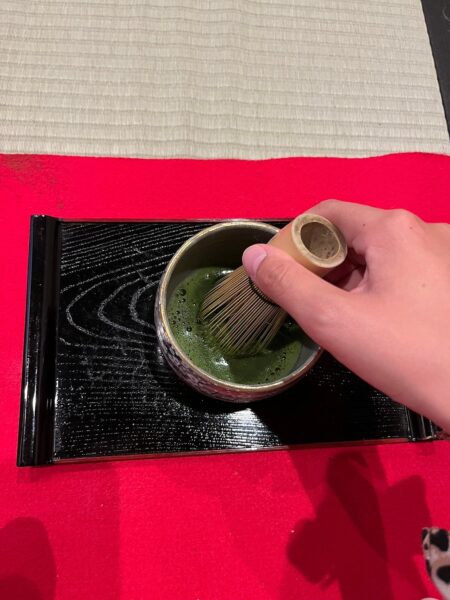
Osaka’s Doutonbori is famous for its vibrant streets filled with neon lights, mouth-watering street food, and bustling nightlife. But amidst the chaos lies a quieter side. Traditional teahouses dot the area, offering an intimate escape. Here, the tea ceremony thrives, blending the modern energy of Doutonbori with ancient customs.
While many tourists flock to Doutonbori for its food, taking part in a tea ceremony offers a more immersive dive into Japanese culture. In contrast to the fast pace of the surrounding streets, the calm atmosphere of the ceremony allows you to slow down and reflect. It’s a perfect break from the excitement outside.
What to Expect at a Tea Ceremony in Doutonbori
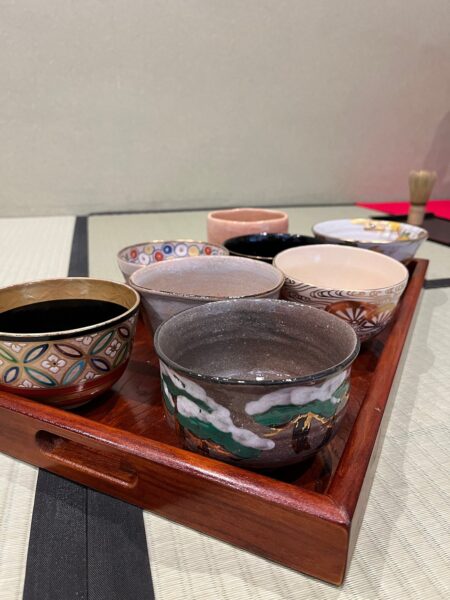
At the heart of every tea ceremony is the meticulous preparation of matcha, a powdered green tea. From the way the tea is whisked to how it is served, each step follows a set pattern. The host, often dressed in a kimono, guides you through the process, teaching the meaning behind every action.
- The Setting: The ceremony takes place in a traditional tea room, often adorned with tatami mats, sliding doors, and simple yet elegant décor. The space exudes tranquility.
- The Tools: Expect to see tools like a bamboo whisk, tea bowl, and ladle. Each item has its place and purpose.
- The Tea: Matcha is thick and vibrant green. It has a rich, slightly bitter taste that pairs well with traditional Japanese sweets often served alongside it.
- The Ritual: Every movement is deliberate. From bowing to the host to turning the tea bowl before sipping, the ceremony is a dance of respect and mindfulness.
A Step-by-Step Guide to the Ceremony
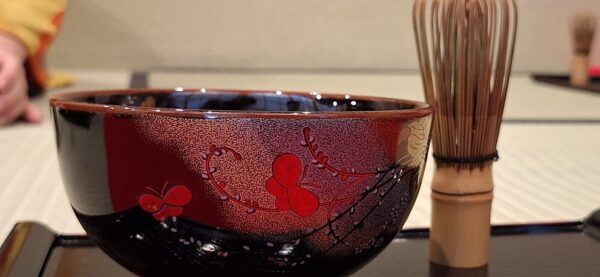
- Entering the Tea Room: Remove your shoes before entering the room. The host will greet you with a bow, a sign of mutual respect.
- Preparing the Tools: The host carefully prepares the tools in front of the guests. Watching the precision and care in their movements is part of the experience.
- Whisking the Tea: Matcha powder is placed in a bowl, then whisked with hot water using a bamboo whisk. The goal is to create a frothy layer on top of the tea.
- Serving the Tea: The tea is served in a bowl, which you receive with both hands. Before drinking, bow slightly to the host as a sign of gratitude.
- Drinking the Tea: Sip the tea slowly, savoring its rich flavor. After finishing, bow again and pass the bowl back to the host.
Why the Tea Ceremony Matters in Japanese Culture
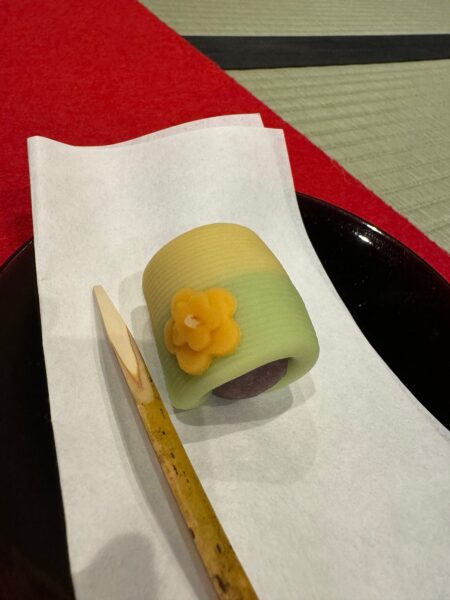
The tea ceremony is more than a drink; it’s a meditation on the present moment. Rooted in Zen Buddhism, it teaches the importance of mindfulness. The ceremony emphasizes harmony (wa), respect (kei), purity (sei), and tranquility (jaku).
Each participant, whether host or guest, contributes to the experience. The shared silence, the sound of the tea being whisked, and the taste of the matcha create a moment of unity.
Tea Houses You Can Visit in Doutonbori
If you’re ready to immerse yourself in this experience, Doutonbori has several places where you can enjoy an authentic tea ceremony. Some teahouses cater to tourists and offer English explanations, while others maintain a more traditional Japanese environment.
- Wakoan: Located near the heart of Doutonbori, Wakoan offers both beginner-friendly and traditional tea ceremonies. You can choose between short introductory sessions or longer, in-depth experiences.
- Tea Ceremony Genshinan: A hidden gem in Doutonbori, Genshinan offers a tranquil setting with an authentic experience. The staff will guide you through each step of the ritual, explaining the significance behind it.
- Tsubaki no Shiro: Known for its peaceful ambiance, this teahouse offers private tea ceremonies. It’s a great choice if you want a more personal experience.
The Cultural Significance of Matcha
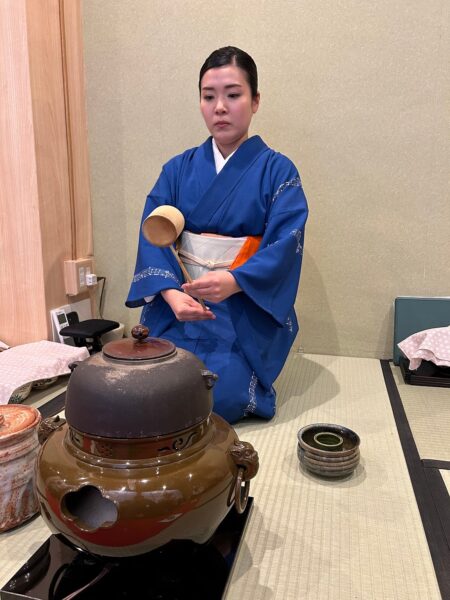
Matcha, the powdered green tea used in the ceremony, holds a special place in Japanese culture. Unlike regular green tea, matcha is made from shade-grown leaves, which are ground into a fine powder. This gives it a unique flavor and vibrant green color.
Historically, matcha was consumed by monks to help them stay alert during meditation. Its calming yet energizing properties make it perfect for a ceremony focused on mindfulness.
- Health Benefits of Matcha:
- Rich in antioxidants, particularly catechins, which are known to support heart health.
- Contains L-theanine, an amino acid that promotes relaxation without causing drowsiness.
- Boosts metabolism and aids in detoxification due to its chlorophyll content.
- Provides a calm energy boost thanks to its caffeine content, but without the jitters caused by coffee.
Why You Should Experience a Tea Ceremony in Osaka
While tea ceremonies are held across Japan, the unique blend of old and new in Doutonbori makes it an unforgettable place for this tradition. Participating in a tea ceremony here lets you step away from the neon lights and noise, offering a moment of peace in the heart of the city.
The blend of matcha’s rich flavor and the calming atmosphere of the tea room is a grounding experience. For many, the tea ceremony is a way to connect with Japan’s past while reflecting on the present. It’s a chance to find harmony in the simple act of preparing and drinking tea.
Practical Tips for Your Tea Ceremony Experience

- Book in Advance: While walk-ins are sometimes possible, it’s best to book your tea ceremony in advance, especially during peak travel seasons.
- Dress Comfortably: You’ll be sitting on tatami mats, so wear something comfortable. Some teahouses may also provide traditional clothing, like a kimono, for the experience.
- Respect the Ritual: The tea ceremony follows a specific order, so be mindful of the host’s instructions. Bowing and using both hands when receiving the tea bowl are signs of respect.
- Ask Questions: Many teahouses, especially those catering to tourists, encourage questions about the ritual and its meaning. Don’t be afraid to ask and learn more.

